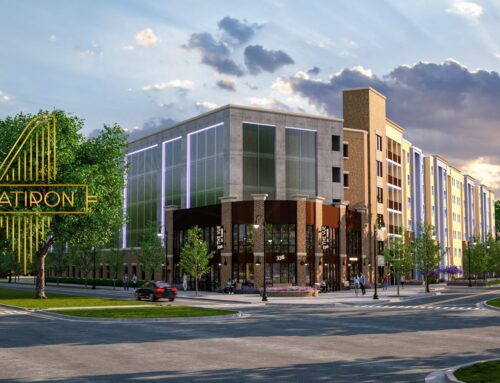Fountain Residential President Brent Little was interviewed Friday by Haisten Willis, Editor of the Texas Real Estate Business magazine for their front page article of the April 2015 edition (Volume 11, Issue 2).
Haisten Willis- Question #1: Please highlight one or two new projects your company is working on at a university in the state of Texas. We like to include a lot of detail in our stories with specifics about the project so if you have a project sheet or marketing materials with a lot of the basic information feel free to send that along. How did you get involved in this project or projects? What are your goals with this development?
Brent Little- Answer #1: I have forwarded the info on the UH and UNT projects. The UH project is a site that we have been tracking for 7-8 years. The owner of the primary parcel had planned a high density off campus dormitory. When he could not get that financed for several years, we convinced him to sell to us since we had been so persistent. Then we had to buy the two adjacent parcels from two other owners as well, none of which was on the market. The buildings that were there on the three sites were blight.
The UNT site was an aggregation of single and MF lots that were rezoned by a local who designed a higher density project and got it entitled, but then could not get it financed. We stepped in and redesigned the project and capitalized it. The redesign decreased costs and density, decreasing risk and increasing returns.
Haisten Willis- Question #2: Texas has several universities that are very, very large. I grew up in Georgia, where the largest university has less than 35,000 students. In Texas I believe six schools are 35,000+ enrollment. What challenges do these large campuses present for developers? Does this result in denser, taller development or with the larger campuses are students more accustomed to traveling some distance to their classes?
Brent Little- Answer #2: Density is a function of local zoning. In Austin for example, the Riverside area was where all of the student housing would be built, because the land values were too high in two and the density too low to make housing profitable close to campus. Austin changed the West Campus area zoning to high density, allowing the boom of high density housing proximate to campus to occur. In other cities, they are not as amenable to higher density and drives the properties further away from campus where the density/price ratio makes sense.
They higher density projects also have to achieve higher rents, so the lower density projects (lower cost) further away from campus (lower land basis) can provide a new housing option for students that do not have the ability to pay the higher rents for the closer apartments.
The biggest challenge at these larger projects today is the risk of overbuilding. All developers want to develop at the flagship school and it is leading to overbuilding and lower occupancies and lower rental rate increases in some markets like College Station.
Haisten Willis- Question #3: One of the hottest terms in real estate development at the moment, generally speaking, is “mixed-use.” I know this has impacted student housing in a major way as well. Are most housing developments today of a mixed-use variety? What challenges do these developments present? Is there pressure from schools and/or local governments to build mixed-use? What amenities do students expect with new developments?
Brent Little- Answer #3: The city officials have attended too many ULI conferences that tout the magical benefits of mixed use. Therefore, so many cities are requiring a mixed use component to acquire the zoning you are needing. The problem with that is that not all good apartment sites are good retail sites and 600 students is not nearly enough of an audience to support any type of retail. I always say, you should not build retail in your project unless you would have built just retail there. Vacant retail space does not help anyone, but there is a tremendous amount of vacant retail in these mixed use projects that are not located on streets with 30,000 car trips per day. It would be interesting to see a survey of all mixed-use and their occupancy levels and rental rates (are they having to give it away to get occupancy?) When you have the traffic, it is a great amenity for your project and the residents.
Haisten Willis- Question #4: 2014 saw cap rates nearing record lows and very expensive trades in regards to student housing. Is this a trend you see continuing? Why or why not?
Brent Little- Answer #4: There is still more capital than there are good deals. The specter of rising interest rates is the only potential increase in exit cap rates that I am seeing. The pundits have been projecting increasing rates at conferences for two years and they have yet to materialize.
Haisten Willis- Question #5: Many reports I’ve read indicate people want pedestrian-friendly development. How does this affect student housing development? I’m guessing this means land close to campus is at a premium, and there is pressure to build at a higher density.
Brent Little- Answer #5: Walk to campus locations are the gold standard in the industry. As noted, there is plenty of demand for other types of projects, but the competition for those premium sites is at an all time high.





